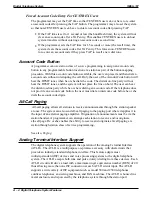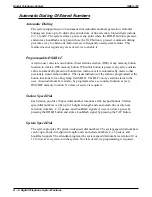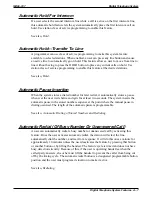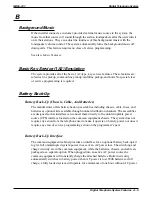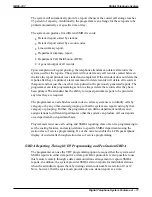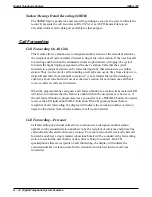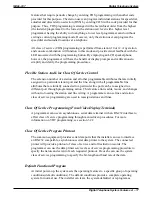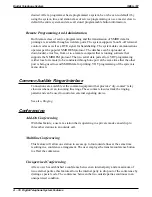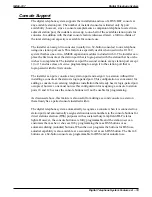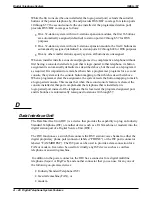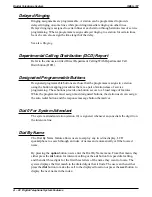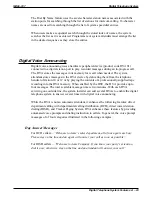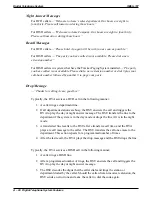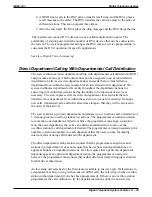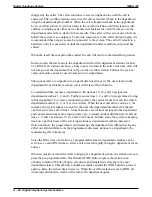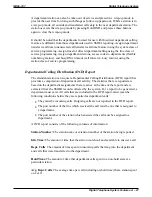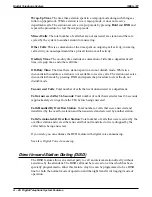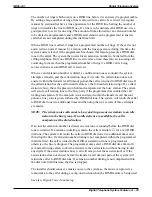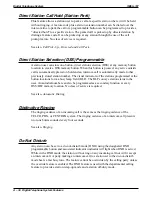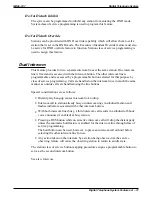
(seven-, eight-, and eleven-digit Caller ID numbers are already in a format that can be
dialed and do not need to be transformed.)
The system will dial those numbers that are present in the 6-digit table as local calls even
if they are in different area codes.
All Caller ID features require that the Caller ID decoder device (product code CID08)
deliver Caller ID data to the system’s RS-232 data port B. The programmer must
configure this port to match the output of the Caller ID decoder device. The
recommended configuration is 9600 baud, with eight data bits and one stop bit. The
programmer must use VDT programming to do this.
Caller ID distribution is in the form of messages which specify the Caller ID data for
lines with incoming calls, and identify the stations answering such lines. The data is in
the ASCII format and is suitable for use with PC-based application programs.
Calling Station Identification On BLF
If a user has stored the station number of a calling station into the direct station
select/busy lamp field (DSS/BLF) of his or her station, the flashing of the corresponding
BLF light will identify the caller. The BLF lights also indicate the status of the DSS
telephone using the department pilot number.
Class Of Service
Block Programming
A programmer can assign a particular line or station’s class of service to an entire block
of lines or stations with one programming action. This feature eliminates the need for
him or her to individually program stations and lines with the same class of service. A
programmer can perform a block programming class of service after he or she has
programmed a station class of service or line class of service for a particular station or
line.
Class Of Service Programming (From Main Station)
Class of service (COS) programming is used by the installer/programmer to configure
and assign all system, line, station, and special purpose operating features. The
installer/programmer enters COS programming by dialing an access code over the
intercom line. System administrators can enter COS programming with another code to
reprogram any system, station, or special purpose operating feature that may require
change at a later date. Line reprogramming ability is not available through system
administration programming. The system attendant can reprogram certain system-wide
Digital Telephone System
IMI66–107
A – 16 Digital Telephone System Features
Summary of Contents for Air Impact DSU
Page 2: ...Printed in U S A GCA47 157 ...
Page 30: ......
Page 112: ......
Page 192: ...Digital Telephone System IMI66 107 3 80 System Programming ...
Page 283: ......
Page 284: ......
Page 285: ......
Page 286: ......
Page 287: ......
Page 288: ......
Page 289: ......
Page 290: ......
Page 291: ......
Page 292: ......
Page 293: ......
Page 294: ......
Page 295: ......
Page 296: ......
Page 297: ......
Page 298: ......
Page 299: ......
Page 300: ......
Page 301: ......
Page 302: ......
Page 303: ......
Page 304: ......
Page 305: ......
Page 306: ......
Page 307: ......
Page 308: ......
Page 309: ......
Page 310: ......
Page 311: ......
Page 312: ......
Page 313: ......
Page 314: ......
Page 315: ......
Page 316: ......
Page 317: ......
Page 318: ......
Page 319: ......
Page 320: ......
Page 321: ......
Page 322: ......
Page 323: ......
Page 324: ......
Page 325: ......
Page 326: ......
Page 327: ......
Page 328: ......
Page 329: ......
Page 330: ......
Page 331: ......
Page 332: ......
Page 333: ......
Page 334: ......
Page 335: ......
Page 336: ......
Page 337: ......
Page 338: ......
Page 339: ......
Page 340: ......
Page 431: ......
Page 436: ......
Page 437: ......
Page 438: ......



